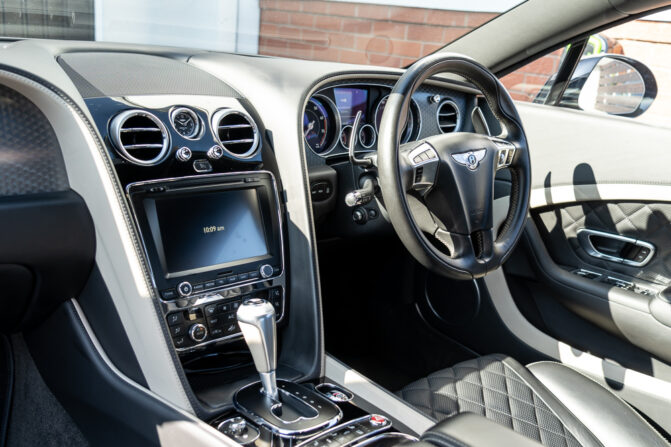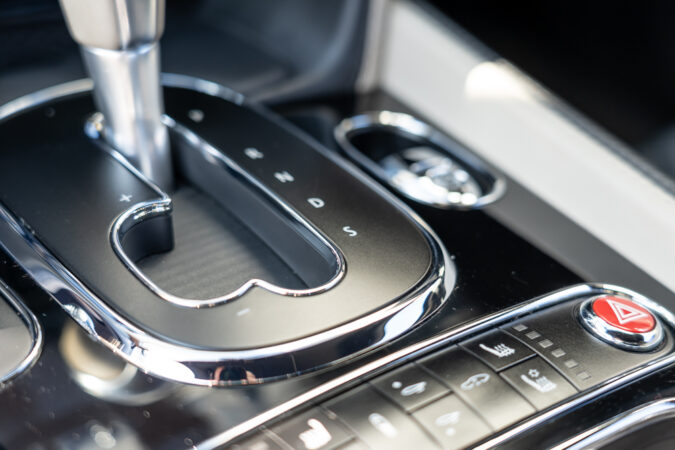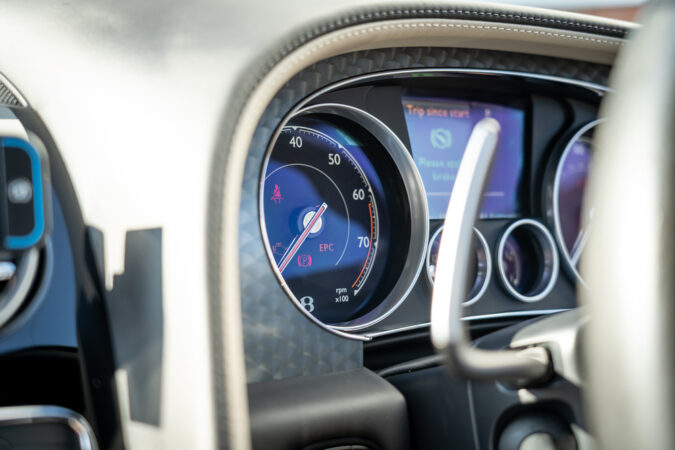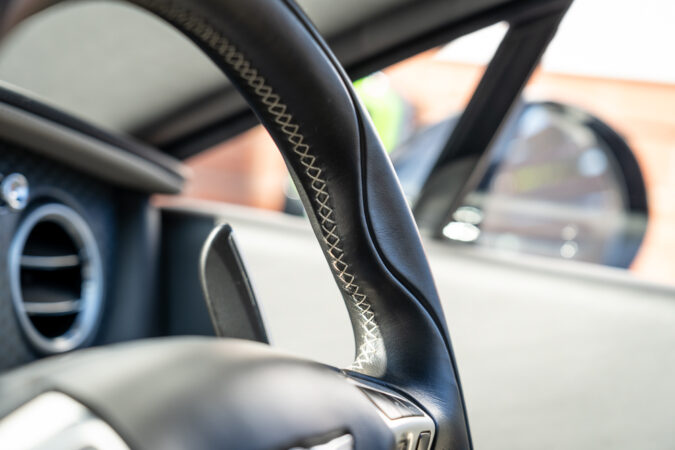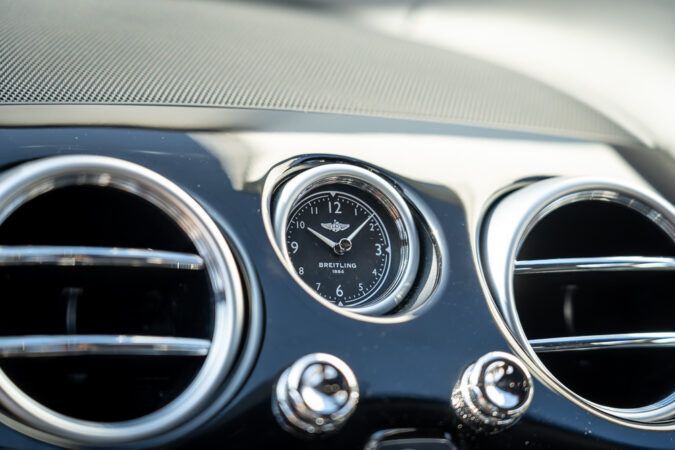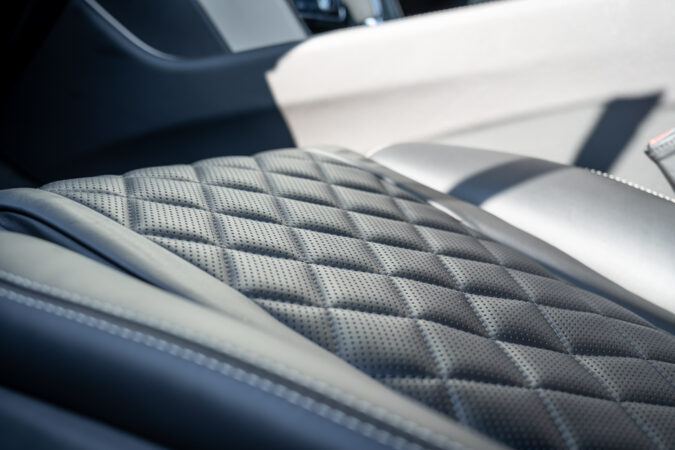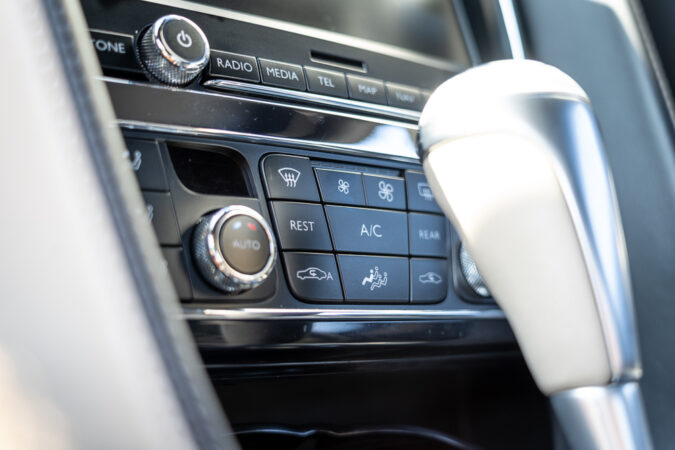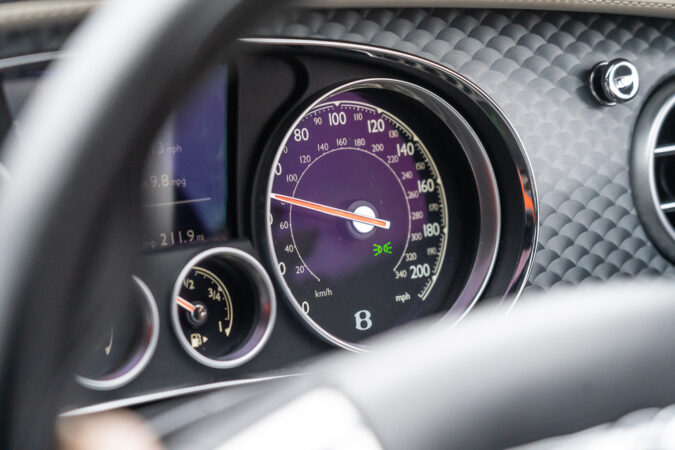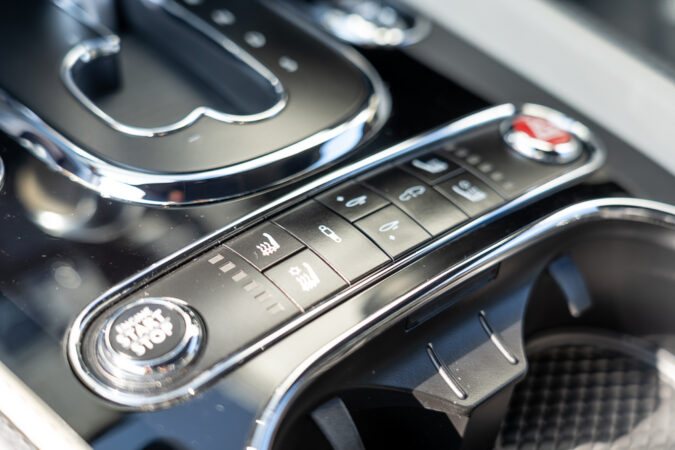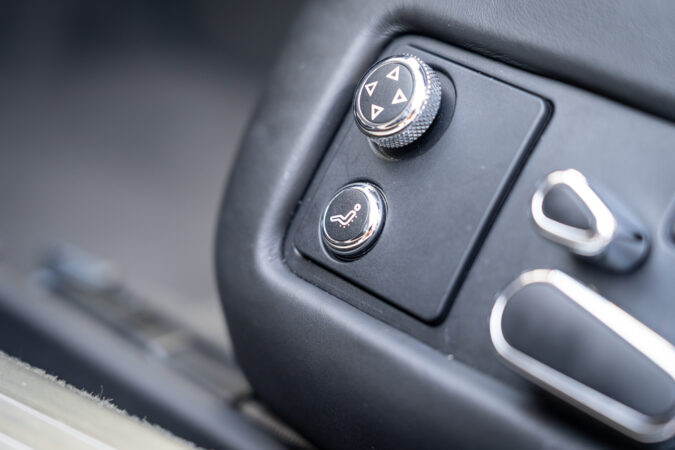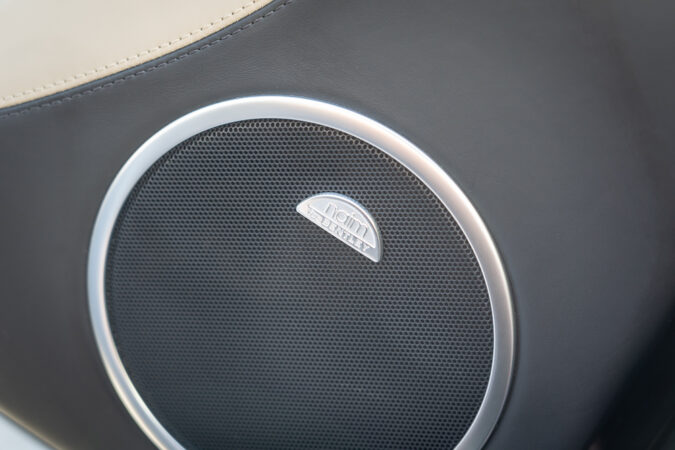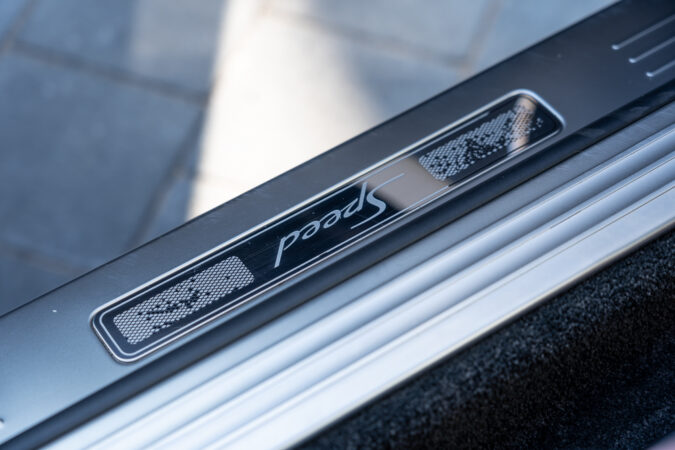For those who’ve checked in lately, you might’ve caught wind of Motor Verso’s latest project car, my new 2016 Bentley Continental GT, which I bought from the lovely folks over at Auto100. I’ve gushed about this car a lot recently, and for good reason… It’s just a lovely machine inside and out, perfectly showcasing the very best of automotive craftsmanship and engineering. In fact, it’s that ‘inside’ part that I’d like to discuss more of today; the first-class interior.
As heavenly as the Continental GT might be to drive around and look at, it somehow gets even better once you take a step inside. Despite its age, this 7-year-old cabin still feels otherworldly, even compared to a lot of present-day luxury cars that I’ve driven. This is, in part, thanks to how well the previous owner took care of it, and how Auto100 cared for it while it was sitting in their showroom. Moreover, it’s a testament that Bentley really knows how to design, craft, and put together a properly smashing interior.
The one thing that separates a good interior from a great interior is the level and scale of the attention to detail, everywhere you look and touch. In the Bentley Continental GT, the degree of refinement that they’ve been able to assemble and mould is insane. The way Bentley shapes and utilises metalwork is exceptional, and beyond just simply slapping some metal trim together, they go the extra mile by ensuring that it feels and looks good when you’re using it.
One of the things that Bentley is known for is adding knurling and textures to their metal trim which makes it ever so pleasant to fiddle with, even when you’re merely trying to adjust the radio volume or are trying to tweak the airflow from the air vents. With every single switch, knob, or button, you can feel the individual grooves and the depth of those knurled textures. Similarly, the fit and finish everywhere is superb, just like the gear lever release button, which feels solid and clicky to press into, surrounded by cold, solid metal, all wrapped up in leather.
Supreme Attention To Detail & Otherworldly Refinement
Of course, for every plus point, there are certain aspects of the Continental GT’s cabin that might give you pause. For me, that moment is the abundance of piano black everywhere in the interior, which is a bit of a double-edged sword. Sure, it looks all fancy and premium when it’s clean. However, once a bit of dust and lint gets onto it, it becomes more of a chore to keep it looking pretty and polished. Thankfully, there are a lot more positives to speak of, when you spend more time in the Bentley.
Given how expensive the Continental GT was back when it came out (as with every Bentley), naturally, the expectations for how the interior is presented were sky-high. Duly, Bentley obliged, as you could hardly find any traces of cut corners in place of cheap plastics, spongy buttons, or otherwise. It’s not picture-perfect though, as I’ll discuss more of it in a hot minute. For now, some of the positives (and there are loads of them to find in here)…
One notable example is the Bentley Continental GT’s steering wheel, with all that nice, supple leather and metal trim. Plus, there’s that familiar diamond knurling pattern that we saw earlier, and one that Bentley has refined to this day, seen on the scroll wheel for navigating through the little screen on the instrument cluster. It’s these small touches that set Bentley apart, even compared to premium marques like BMW, Mercedes, or Audi.
The one sore spot that you might’ve noticed here, in my particular Continental GT, is the blank area on the left-hand side of the steering wheel. This is where the adaptive cruise control buttons and switches should’ve been. Alas, my one didn’t come with that, though it does have regular cruise control. But hey, at least it doesn’t have any obvious blank switches.
Ergonomically, one thing you do need to get used to is the windshield wiper and indicator stalks, as they sit a tad lower than you’d normally find them on most other cars, or are expecting. This is because the upper half of the steering column is dominated by those large paddle shifters, which also have metal trim on the edges. So, even shifting gears manually in the Continental GT has that sensory overload that’s hard to not get used to here.
A Mastery of Leather, Aluminium, And Metalwork
Looking elsewhere in the cabin, you’ll find more lovely details throughout the interior. Another one of the many aspects of traditional craft that Bentley has perfected over the years, and has since made into their hallmark design trait, is the turned aluminium dash. It gives you time to appreciate how much talent and work goes into making each car. Around the dash, you might’ve also been able to spot the really intricate fluted switches that control the air conditioning vents.
Naturally, the use of leather, besides the steering wheel, has been generous, to say the least. In my car, it was configured with a nice contrast between dark black leather and light cream, made all the better with the diamond-pattern stitching, and the softness of the leather that Bentley uses. The one major downside that I could foresee is that the leather is quite fragile and delicate. As such, I will have to remind myself to be a bit more cautious about scratching it.
That same, beautiful stitching is present everywhere; the seats, steering wheel, door cards, dashboard, as well as the headliner, among others. The only thing in here that matches (and exceeds) the softness of the leather are the Continental GT’s floor mats and carpeting, which is rather pleasant to sink my feet into at the end of a long day. For the sake of objectivity, it’s not all sunshine and roses though, as there are a few more parts of the cabin that are worth critiquing.
Earlier, I mentioned that Bentley doesn’t have a tendency to cheap out on the quality of the upholstery or trim pieces. To be fair, there’s almost no sign of it here. However, the one place that Bentley did decide to not use and skip on leather, wood, aluminium, or metal, is also the one place that you’d touch very often. The centre console stack has an entire column of cheap plastic buttons, and while they look good and work well enough, there’s a noticeable dissonance between its clunky-ness and the rest of the sumptuous interior.
A Blend Of Old-School Craftsmanship & New-Age Tech
Aside from that, one other noteworthy part of the Continental GT that I really like is the gauge cluster. It’s a small thing, but I do appreciate Bentley’s use of anti-reflective coating on the glass. It not only prevents excessive glare (which makes reading the gauges a lot easier), but this also gives it a nicer, more polished look that I don’t often notice or care about with typical gauge clusters. Oh, and it has a small screen, too.
Although the world is leaning more toward fully digital gauge clusters (which had already begun trending even way back in 2016), I actually quite like that Bentley’s stuck with analogue gauges in the Continental GT. To my eyes, they’re way classier and more timeless, and they’re a treat for the eyes when you need to look at them. Then, there’s Bentley’s subtle use of clean fonts and minimalist design, which has aged well to this day.
What isn’t nearly as eye-candy though, is the tiny screen that sits between those analogue gauges. I think it’s perfectly fine, and as a product of its time, this would’ve been a decently sharp display. But, in this day and age of high-resolution graphics, those pixels on the tiny display are far more apparent and noticeable nowadays. Still, it’s sharp and legible enough, and the colours still pop, despite its datedness today.
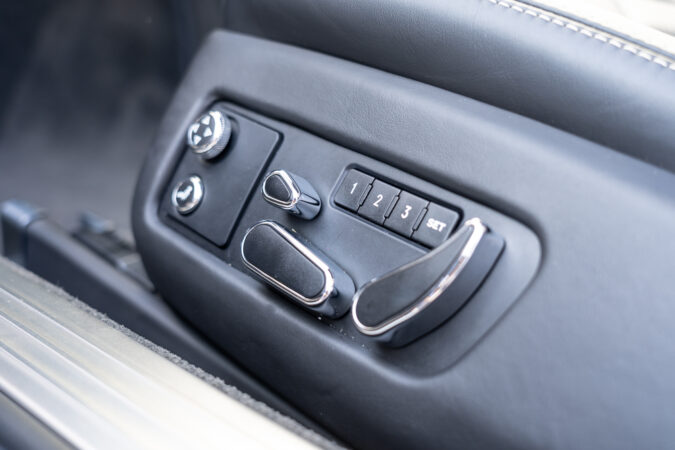
Speaking of technology, Bentley’s love for classical timelessness and traditional craftsmanship didn’t stop them from integrating some of the best tech (for its time) into the Continental GT. In my car, for example, there are both heated and cooled seats, as well as memory seat functions for both the driver and passenger. There’s even the option to raise or lower the rear spoiler (not really sure if it even adds any downforce), as well as lowering or raising the suspension. The latter not only aids with clearing tall speedbumps, but also makes it a tad easier to egress and ingress.
There are a few other interesting buttons in here, which are mostly clumped together near the start/stop button, that’s worth mentioning, like some buttons for the adaptive suspension. The Continental GT has a sporty suspension setting, a comfort suspension setting, and a couple more in between. For the most part, I’ve had it in its comfiest setting, given that for a car like this, I don’t really see the point of putting it in the sportiest mode. But, as I’ve outlined in my driving impressions write-up, it does pack a punch when you’re really flooring it.
Additionally, there’s a button in here that lets you monitor the tyre pressures in real-time. While this isn’t a surprise, given other cars have this. What is unique though, is how the Continental GT has a system that tells you what the ideal tyre pressures are, whether you’d like to fine-tune them for comfort or sporty driving. Granted, you have to then manually change the tyre pressures yourself, but it’s neat that Bentley actively gives you a readout and guide on where the tyre pressures should be, depending on what you’re planning on getting out of it.
If you want to learn more, check out my in-depth tyre review for the Continental GT (TL;DR, they’re some really good tyres). The seats are worth mentioning once again, as my particular car came spec’d with the massaging seat option. Now, massage seats in cars can be a bit of a hit or miss, and while some of them can feel really good, others just rumble, vibrate, or lightly prod you in the back. In the Continental GT, the massage seats aren’t just quiet yet aggressive, but they properly feel like tiny little dots and balls moving around. This is what actual massage seats should feel like.
Still, There’s Some Room For Upgrades & Improvements
The one piece of electronic gadgetry in here that really does feel its age is the infotainment unit and the multimedia system. I’ve discussed it before, which showcases just how far technology has come since this Continental GT was conceived back in 2016. At the very least, that infotainment system does have all the basic features you really need, like satellite radio, as well as a CD player (and even a CD changer!).
On top of that, there’s Bluetooth, so you can pair it with your phone and sync them to stream music and podcasts, or make phone calls. Besides that, there are a few other simple functions, like using that display as a screen for the reversing camera, or using its (admittedly outdated) satnav. Speaking of, one of the best things to come fitted onto my Continental GT is the Naim sound system.
It’s an awesome addition, which was originally a £5,500 option, and it definitely sounds the part. I’ve found that the audio quality and fidelity are really good… But, once you crank up the volume, it tries to output way too much bass at a time, so much so, that the sound quality gets tremendously muddled, so that’s one thing to bear in mind, and not put it on full blast. Thankfully, if things go wrong anywhere in here where electronics are concerned, I’m grateful that I’ve been able to get a very comprehensive aftermarket used car warranty from Warrantywise.
Anyway, going back to that infotainment system, I do plan on upgrading it to a newer head unit that can at least support Android Auto and Apple CarPlay, with all the quality-of-life improvements they will bring. Although, just as I experienced while similarly upgrading the factory-fitted, default infotainment system on our previous project car, an Audi R8, this is a pretty comprehensive job.
This sort of work not only requires disassembly of the entire dashboard to get to all the wiring and circuit boards underneath, but I’ll then have to deal with the rat’s nest of cabling that’s tucked away behind the glovebox. Apparently, those cables are fibre optic, which adds another layer of complication. I do aim to document the entire process of upgrading the old infotainment system, so I’ll keep you folks updated on how that’s going.
On the other hand, the one thing that doesn’t need any upgrading or changing, is the dash clock. Despite Bentley fully embracing the mystical art of modern technology, it’s nice to see that they’ve stuck by their more traditional roots. The most obvious tell-tale aspect of this is the Breitling dash clock, echoing a long partnership between Bentley and Breitling. It’s not a highly complicated mechanical timepiece or anything – it’s quartz – but it’s still a really nice clock.
Luxurious, Comfortable, But Still (Somewhat) Practical
From a utilitarian and practicality perspective, if anyone’s curious about what a Bentley Continental GT is like to live with day-to-day (besides its comfort, luxury, and refinement features; which get an automatic 10/10 from me), it’s been a bit of a mixed bag. Up in the front, there’s a split armrest, which supports my arms on a long drive well enough. Aside from this, they also open up individually to reveal a bit of storage space inside. Although, it’s not really that big, so it’s only really suitable for slim, long things, such as pens or loose pennies.
Close by, there’s the Continental GT’s cupholders, which are perfectly usable. Additionally, there are some door bins, which are big enough for keeping things such as paperwork, booklets, maps, and smaller items, though it’s not big enough to slide in water bottles. Another pretty nice touch is the automatic dimming rear-view mirrors and wing mirrors, as they darken to stop glare from high beams – an underappreciated and most welcomed bit of kit for nighttime driving.
Oh, and the Continental GT does have some rear seats (it’s more of a 2+2 rather than a 2-seater), but it’s really only there for emergencies. I can’t really see anyone using those rear seats on a daily basis (maybe for kids, perhaps?), as they’re quite small and useless for adults to be comfortable in for any more than a short drive. Still, I’m quite impressed that Bentley continued to take some time to put in all that attention to detail and quality craftsmanship for the rear seats too, given that most people will probably never get to use them. Overall, I’m pretty happy thus far, so I’ll keep you all updated as I spend more time with the Continental GT.

